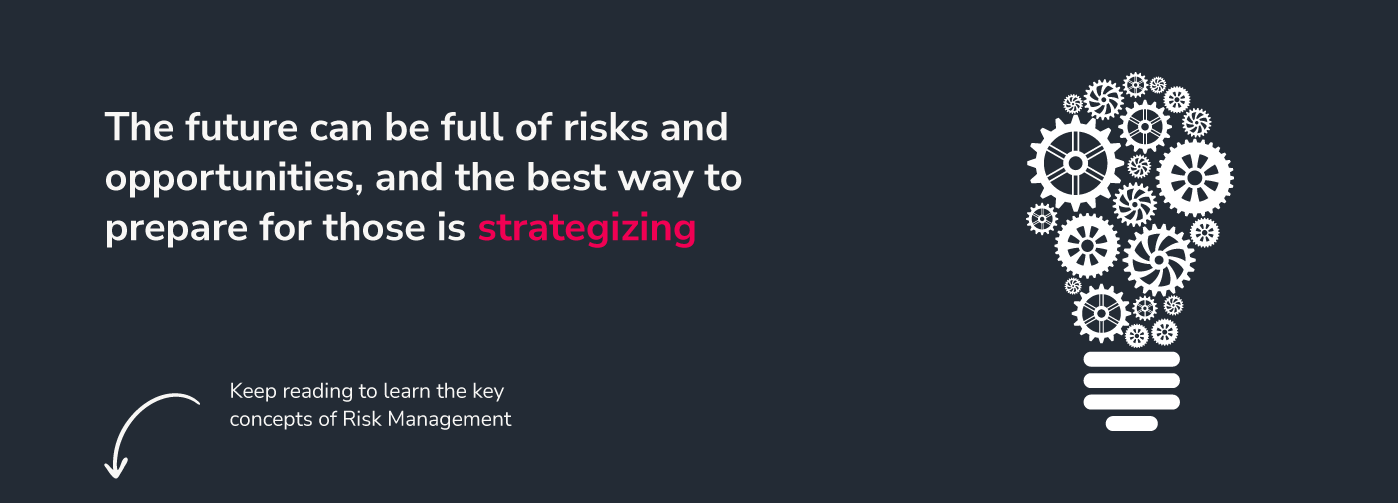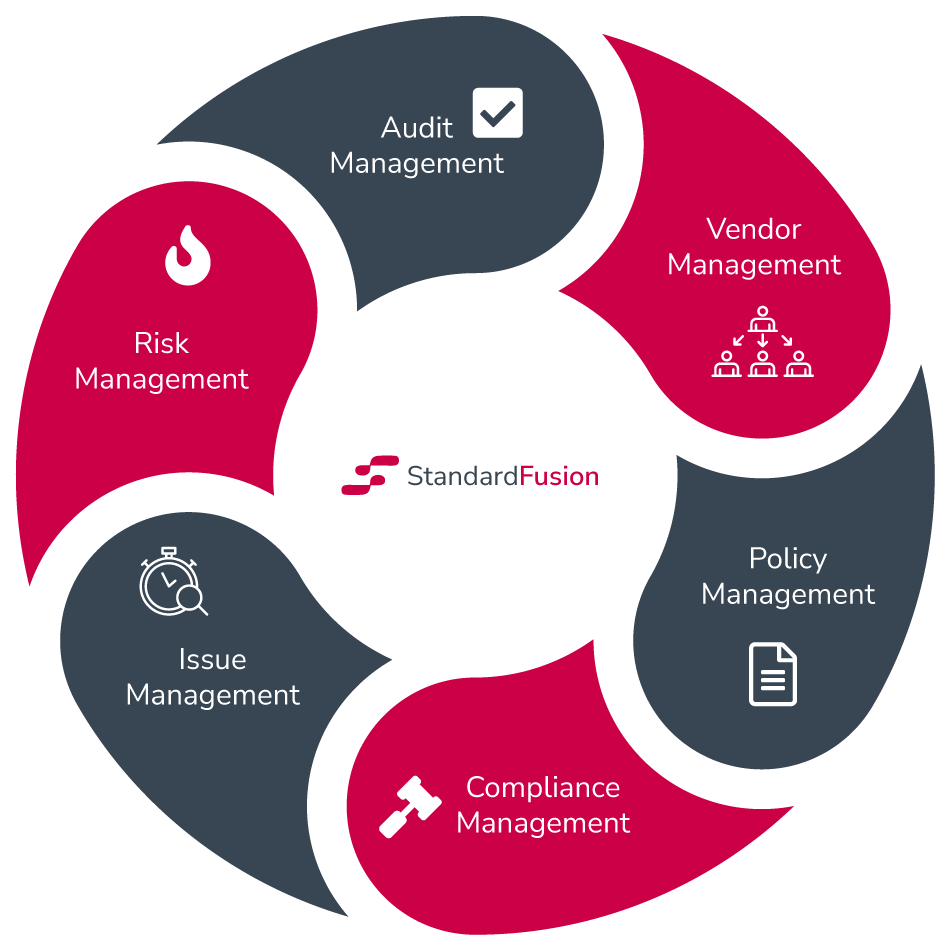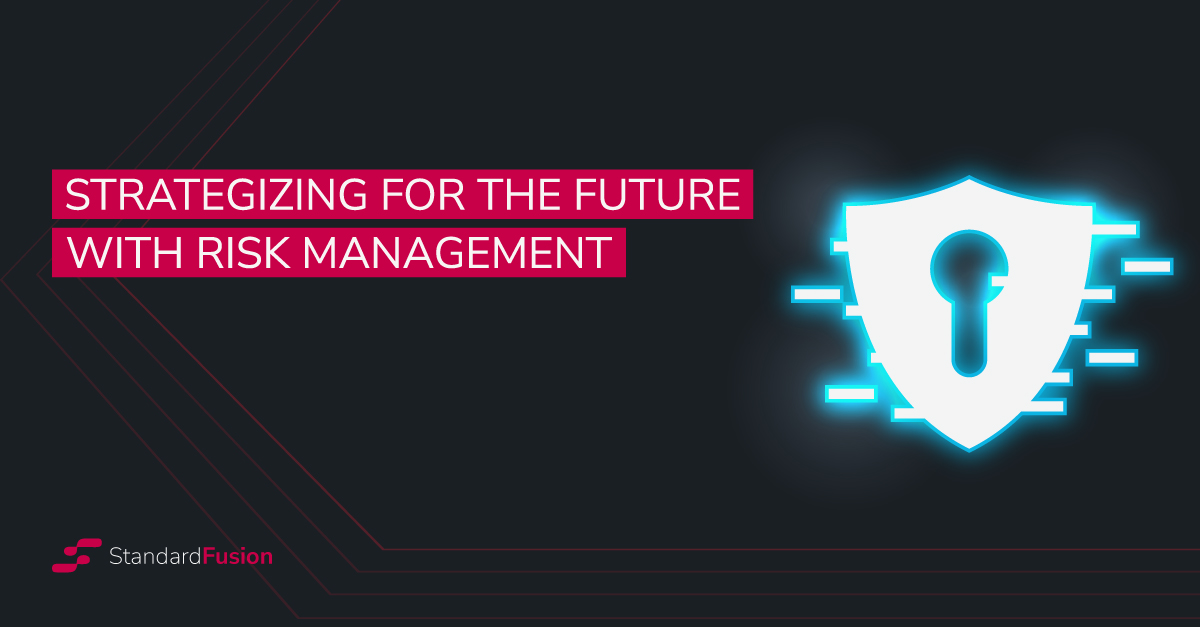There’s only one thing we have learned about risk management in the past few years: risk isn’t one-dimensional. As covid spread worldwide, society and businesses were tested in multiple ways — from supply chain to third-parties interactions to communication.
Now, the challenges are far from over; between political tension, war, climate crisis, and cyber threats, the risk era appears to be here to stay.
This article will uncover what you need to do to become more proactive, identify risks earlier and create a risk-aware culture.
Let’s dive right into it!
Table of Contents
- Understanding the risk management process
- Risk management definition – the known unknown
- Building a risk-aware culture for the future
- How can a GRC tool help?
- Is the future “risk-free”?
- Key Takeaways
Understanding The Risk Management Process
Let’s say you are planning a camping trip with your friends and family. You certainly spend time preparing for it, just to guarantee you have a fun and pleasant getaway, right? Some of the questions you ask might include:
- How much water will you need?
- How many meals do you need to pack?
- How warm do your clothes need to be?
- Do you need repellent and sunscreen?
Well, you might not have realized yet, but that is you thinking about how to manage risks and mitigate them. So, if you get to that level of detail and preparation for a routine overnight trip, why wouldn’t you do the same with your organizational risks?
It works the same way in your organization; suppose you understand the potential cybersecurity threats to your data. In that case, you could ask some of the following questions:
- Are my cryptographic methods able to protect my data sets better?
- What are the layers of protection we have put in place?
- What are our response plans in the event of an incident?
- What are our business recovery plans?

Risk Management Definition – The Known Unknown
Probably the most well-known definition of risk management is the chance of certain occurrences adversely affecting objectives. It is the degree of exposure to negative events, and their probable consequences.
Based on this definition, we can list the most relevant attributes of a risk:
- The definition (identification) of the event;
- How likely the event is to occur;
- The amount at stake (impact).
It’s like when you go camping, and you have to decide whether or not taking a rain jacket is a good decision. You can check the meteorological conditions (likelihood) and think about how uncomfortable it would be to spend all day in wet clothes (impact). But ultimately, your appetite to take the risk will define your course of action.
On the other hand, what about alerting your friends about the weather forecast and making sure they can also pack a rain jacket? This last sentence contains two vital concepts about risk management: Collaboration and culture.
These two attributes of a risk management program ensure the concepts and practical responsibilities are embedded in your organization’s culture and people. And because of that, everyone can collaborate and have an active voice in the risk program.
Unfortunately, if you are not there yet, you could be facing the following problems in your daily operations:
- Lack of documented risk management policy
- Decentralized risk registries and approaches to identify and mitigate risks
- The feeling of fear because of risks (often) become an issue, and you tend to be reactive (rather than proactive), which leads to reputational impact and business loss.
If you are facing any of these challenges, you must develop a risk-aware culture in your organization.

Building a Risk-Aware Culture For The Future
Every single person within an organization is responsible for identifying new threats and helping manage risks. Collaboration is key to a risk management program where everyone knows what to do when they realize something is wrong. These are some examples of the positive impact of a risk-aware culture:
- Everyone can make an impact in managing risks
- Fosters an environment of efficient and timely response to risks as they arise
- All employees will be aware of risks in their own departments
- Design appropriate risk management policies and processes
- Mitigating the possibility of incidents earlier can help the company save money and build reputation in the market
As a risk manager, there are a few practical steps you can follow to build/foster a risk-aware culture:

- Education and Awareness: Equipping employees with basic knowledge about the organization’s risk methodology, identifying and documenting risks, and reporting and developing a corrective action plan is an excellent strategy to engage cross-functional workers.
- Documented Process: Have a well-defined process for identifying, assessing, and reporting risks. The easier it is to report a concern, the more likely employees are to report it. Indeed, having a documented process makes it easier to disseminate it across different regions and keep it consistent.
- Risk Ownership: Assign responsibility for managing specific risks and start with top-level buy-in. Also, it’s important for you to lead by example in order to make risk-conscious decisions visibly.
- Leverage technology: If there is a central tool to document your risks, the management part of the program becomes much easier.
Lastly, the future of risk management will require teams to build and maintain best practices, automate risk management processes, be more agile and develop more talents to fortify the risk-awareness culture.
How Can a GRC Tool Help?
A Governance, Risk, and Compliance tool must be your centralized technology to manage one or several risk registries for two reasons: you need to keep things organized and accessible when it comes to risk management.
There are important benefits to consider when using a GRC tool in your risk management program:
- Risk Assessment methodology can be embedded in the tool for consistent assessments.
- Access and visualization across departments and risk owners.
- Implement the best practices and governance to get the most out of your data. Furthermore, it increases the value of your organization.
- Automated monitoring of deadlines assigned to remediation plans.
- Improved ability to assign risks and document mitigation strategies or corrective action plans.
- Reporting capabilities to better communicate risks across the organization with many different stakeholders (including top leadership).
- Working online with people across the globe.

Using this technology can be strategic for your organization’s future, mainly because risks (in most cases) require long-term action and monitoring. Indeed, the lack of response to cybersecurity and data privacy risks can be the main reason big organizations fail to deliver secure products and make clients and shareholders happy.
Is The Future “Risk-Free”?
Definitely NOT. When you go on your camping trip, there is no way to predict every single event, right? (And it would be too boring, to be honest). But if making your weekend gateway painless is not possible, being prepared for the “known unknowns” might be convenient.
Managing risks in the present represents a future with costs and issues under control, simply because you have thought about what could happen and you (and the rest of your team) have plans in place to respond to adverse events.
A risk management program to help your organization identify, evaluate and understand risks is essential to business and risk management. Moreover, using technology to define a centralized approach to manage risks, properly assign ownership, document action plans, and monitor them up to completion is how the future should look like.
The following is an image of what a centralized approach can help you with:

Key Takeaways
You practice risk management every day; from cooking to going on camping to data security — you are constantly strategizing. However, collaboration and culture will be critical to a strong, future-proof risk management process.
To build a risk-aware culture, you must create awareness, educate, document processes, set risk ownership, and leverage technology. Finally, a successful risk management plan aims to give everyone the agency to make an impact in managing risks and increasing your organization’s value.
What is the best way to achieve this?
By developing a centralized system to manage all your risks. A centralized GRC software will give you access and visualization across departments and risk owners. Also, it will help you keep your data, policies, and vital information well organized and ready to use in your governance and compliance activities. Finally, a GRC tool will enhance your reporting capabilities to communicate risks across the organization better.
Want better risk management?
See how StandardFusion helps users identify risks, assess them and manage their mitigation efforts, all in a simple, easy to use application that increases visibility and decreases your workload.
What to do next?
Book a free consultation with StandardFusion to learn how you can build your customized GRC platform to strengthen your enterprise risk management processes, increase security and protect the value of your organization.
